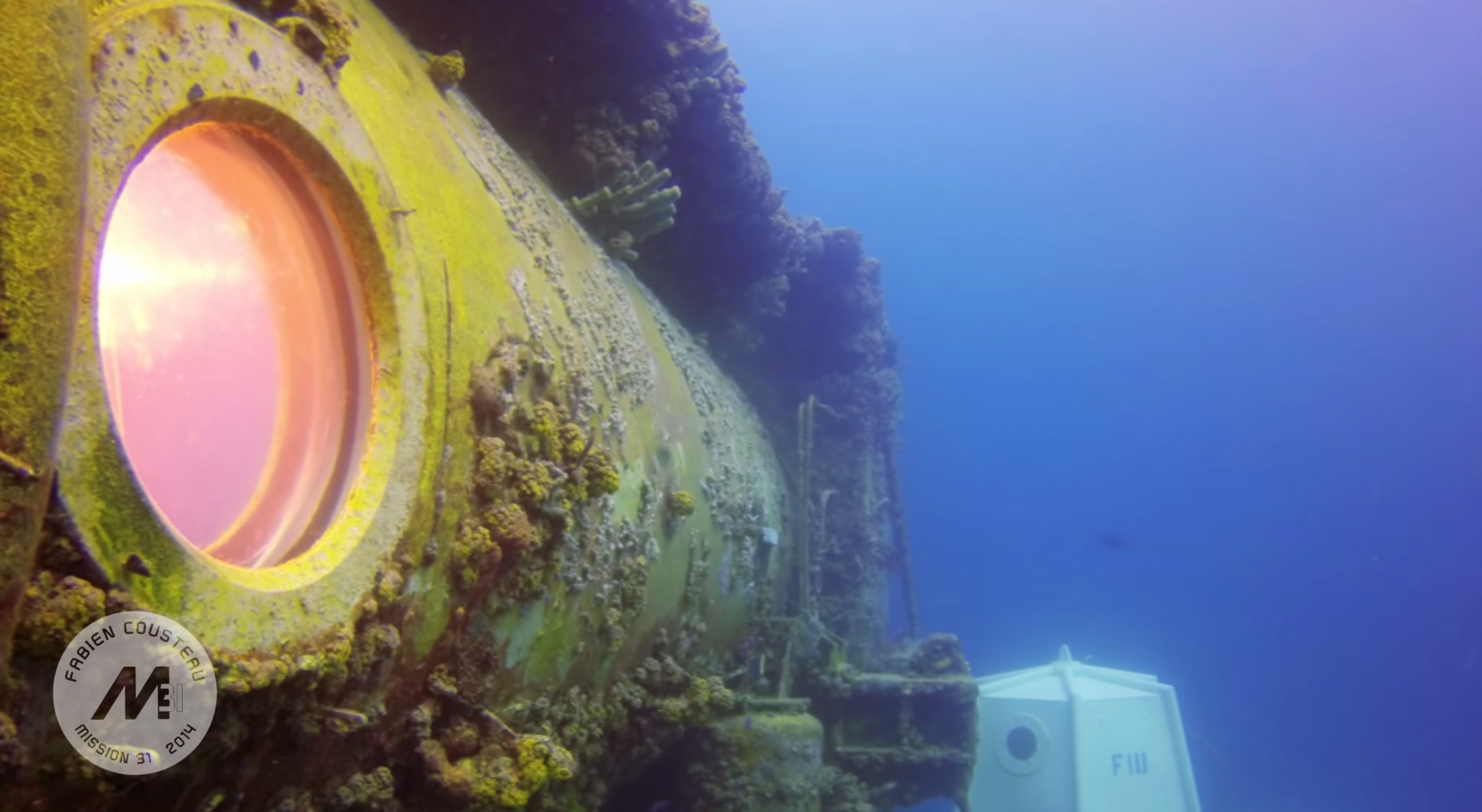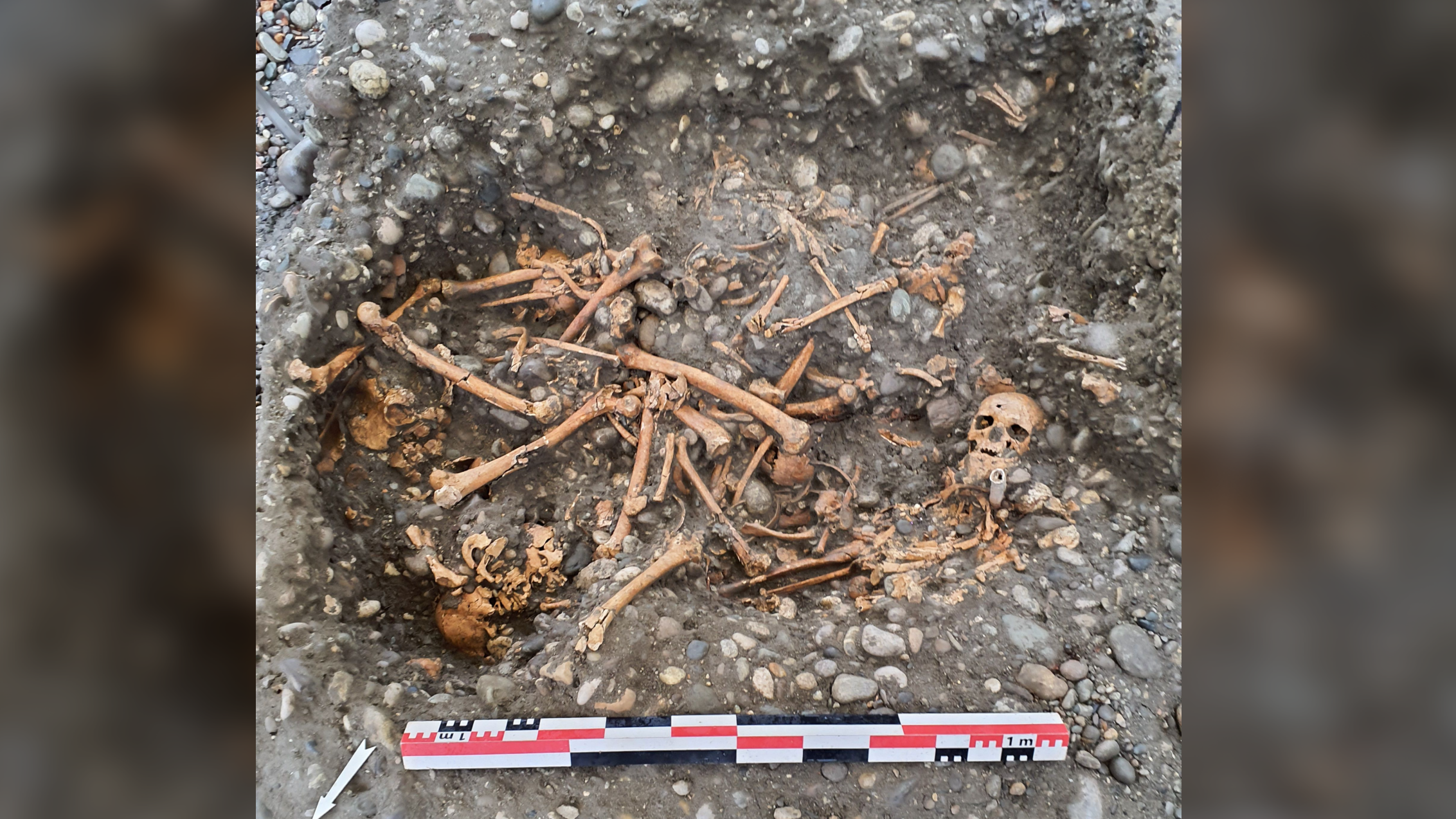What It's Like to Spend a Month Under the Sea

NEW YORK — As his record-breaking 31-day mission underwater drew to a close, Fabien Cousteau was in no rush to go topside.
"I felt like I could stay down another month," Cousteau said. "As a matter of fact, I was almost panicking coming up."
Cousteau, 47, belongs to a "watery family." He's the grandson of the late Jacques Cousteau — perhaps the most famous ocean explorer of the 20th century — and earlier this year, he led the longest-ever expedition at the Aquarius Reef Base, a seafloor laboratory located off the coast of Florida. [The World's Most Extreme Laboratories]
For a month, Fabien Cousteau's home was a habitat about the size of a bus (or, he joked, a New York City apartment), some 63 feet (19 meters) below the surface in the Florida Keys National Marine Sanctuary.
The expedition, dubbed Mission 31, provided Cousteau and his crewmates with a rare luxury in ocean science: time. Free of the decompression obligations of diving from the surface, Cousteau said he could spend 10 to 12 hours a day outside Aquarius.
On Thursday (Oct. 16), Cousteau told an audience at the Bloomberg Next Big Thing East Summit here in Manhattan that his team was able to collect three years' worth of data — enough to fill 12 forthcoming scientific papers on topics that range from the unexpected effects of climate change to the ways in which the loss of marine predators affects coral reefs.
While the focus of the mission was on the world outside the habitat, Cousteau and his colleagues also monitored their own psychological and physiological well-being. Cousteau said that as more time passed, he became less and less interested in what was happening on Earth's surface, even though he and his crewmates had constant communication with their families and support teams.
Get the world’s most fascinating discoveries delivered straight to your inbox.
"Not only was I disconnected with the topside world, but I was also getting more and more integrated with the daily routines of being outside," Cousteau told Live Science. "Every day was a new experience. It's very addicting to be integrated in an alien environment and surrounded by the fireworks display of life. Even though the familiar is there, every time you see new behaviors."
Before most astronauts go to space, they become "aquanauts" first at Aquarius, with missions that typically last between one and two weeks. Cousteau doesn't just see undersea habitats as proving grounds for increasingly long missions to space, however; he said the ocean is a final frontier in its own right. Aquarius is currently the only underwater habitat in the world, and Cousteau described it as an "antique." (It was deployed in 1993.) He said he hopes that humans will eventually build cities under the sea, with bigger habitats that truly feel like homes.
"Whether it's purely for science and exploration reasons or if it's for colonization reasons, I do think it's feasible to have underwater villages and hopefully networks of villages, so that we can not only bring back data and materials but we can also get a much better gauge on what that aquatic world means to us as a species," Cousteau told Live Science.
To be sure, there are a lot of little things that could become big problems without enough preparation for life undersea. In pressurized, underwater habitats, the body is more prone to infections (though wounds actually heal faster). With greater air density, voice patterns also change slightly, the sense of smell is subdued and people lose their sense of taste, Cousteau said. Not to mention, aquanauts eat a lot of freeze-dried food.
"As a French person, that's a violation of our rights," Cousteau said.
Follow Megan Gannon on Twitter and Google+. Follow us @livescience, Facebook & Google+. Original article on Live Science.



